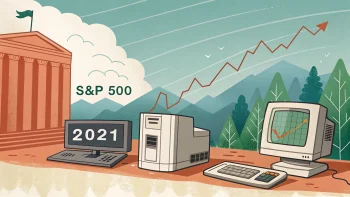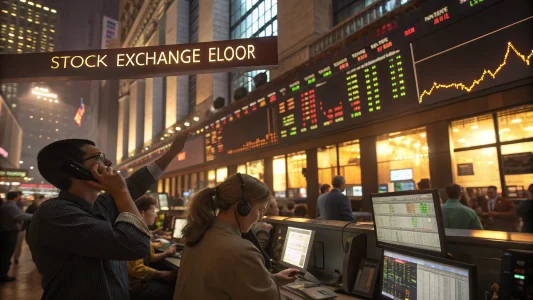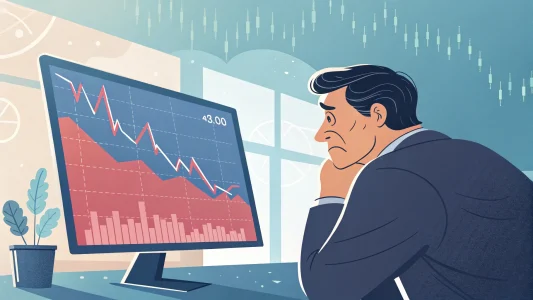The dream of homeownership has long been a cornerstone of the American experience. However, data reveals that homes in the United States have never been more unaffordable for the average worker than they are today, presenting a serious crisis on multiple fronts. In this article, we will explore the factors contributing to this unaffordability, the impact it has on prospective homeowners, and the implications for the future of the housing market.
View this post on Instagram
A post shared by Taylor Sohns- CFP®, CIMA®, MBA- Finance (@lifegoalinvestments)
Table of Contents
ToggleA Brief History: The Shift in Homeownership Affordability
To understand the magnitude of the current affordability crisis, it is helpful to compare it against the past. In 1970, it took the average worker just three years to save a 10% down payment for a home with a median price of $17,000. Fast forward to today, it would take that same worker a staggering 21 years to save a down payment for the median-priced home in the United States, which currently stands at $430,000. This shift from attainable to unattainable has occurred over just five decades and has been driven by several key factors.
The Inventory Problem: Low Supply Equals High Prices
A lack of inventory is the primary driver of the unaffordability crisis in the housing market. The number of available homes for sale in the United States is currently at an all-time low, meaning homebuyers have fewer options than ever. This scarcity of supply inevitably leads to increased demand and as a result, higher prices.
One solution to the inventory problem would be to build more houses. However, this is not as feasible as it may seem due to skyrocketing building costs. Since the beginning of 2020, building costs have increased by 51%, largely due to inflationary pressures on building materials. As a result, builders are only starting construction on 1.3 million new houses per month, which is below the 50-year average.
Investors and Their Impact on the Housing Market
Another factor contributing to the unaffordability crisis is the rise of investors purchasing homes. In 2023, 18% of homes were bought by institutions, up from just 6% two years earlier. This trend isn’t limited to large corporations like BlackRock; small-scale investors, or “mom and pop” landlords, are also increasingly purchasing rental properties. Experts predict that by 2030, homeownership by investors could reach 40%, exacerbating the problem of unaffordable housing even further.
Mortgage Rates: The Homebuyer’s Dilemma
In addition to supply and demand issues, the increase in mortgage rates also plays a significant role in the current housing market crisis. Just two years ago, mortgage rates were at an all-time low of 2.5%, making it more feasible for the average worker to buy a home. Today, however, mortgage rates have risen to 7.7%, creating a dilemma for existing homeowners.
Many homeowners who bought their homes at a low mortgage rate cannot afford to sell their current home and triple their mortgage rate on a new purchase. This contributes to the inventory problem, as it prevents homes from being listed for sale and further strains the market’s already scarce supply.
As a consequence of these factors, today’s average new mortgage payment is $3,000 – three times what it was in 2012. This staggering increase is yet another barrier to homeownership for the average worker, who needs to save for more than two decades to afford a down payment on a median-priced home.
Conclusion: The Future of Homeownership in the United States
The unaffordability crisis currently gripping the US housing market is driven by a complex interplay of factors, including low inventory levels, skyrocketing building costs, increased investor activity, and rising mortgage rates. This perfect storm of conditions has put homeownership far out of reach for countless Americans, raising concerns about the long-term implications for social and economic stability.
While it is difficult to predict the future, it seems clear that without substantial changes to address these issues, the crisis of unaffordable housing will continue to worsen, potentially exacerbating wealth inequality and putting homeownership further out of reach for many Americans. As such, it is imperative that policymakers, industry leaders, and society at large come together to develop solutions to address this problem and protect the dream of homeownership for future generations.
To stay informed on this pressing issue and other economic updates, follow our daily content on all things housing market and economy-related.
Frequently Asked Questions
What are the factors contributing to the housing unaffordability crisis in the US?
The main factors contributing to the housing unaffordability crisis in the US are low inventory levels (which cause high demand and high prices), skyrocketing building costs, increased investor activity in the housing market, and rising mortgage rates.
How has the time for an average worker to save for a down payment changed over the years?
In 1970, an average worker took three years to save a 10% down payment for a home. In today’s market, it would take the same worker 21 years to save a down payment for a median-priced home in the United States.
How is the low supply of housing related to increasing building costs?
Since the beginning of 2020, building costs have increased by 51% due to inflationary pressures on building materials. This has made it difficult and less feasible for builders to construct new homes, resulting in lower inventory levels and further driving up home prices.
What role do investors play in the unaffordability of the housing market?
Investors, both large institutions and small-scale landlords, are purchasing more homes as rental properties. This reduces the available housing inventory for first-time buyers and drives up prices, making it more difficult for the average worker to afford a home.
How have mortgage rates affected the housing crisis?
Increasing mortgage rates have made it more expensive for workers to buy homes and have created a dilemma for existing homeowners who cannot afford to sell their current home and face higher mortgage rates on a new purchase. This contributes to the inventory problem and further strains an already scarce housing supply.
What might the future hold for homeownership in the US?
Without significant changes to address low inventory levels, rising building costs, investor activity, and mortgage rates, the crisis of unaffordable housing will likely continue to worsen. This could exacerbate wealth inequality and put homeownership further out of reach for many Americans, making it crucial for policymakers and industry leaders to find solutions to address these problems.

















